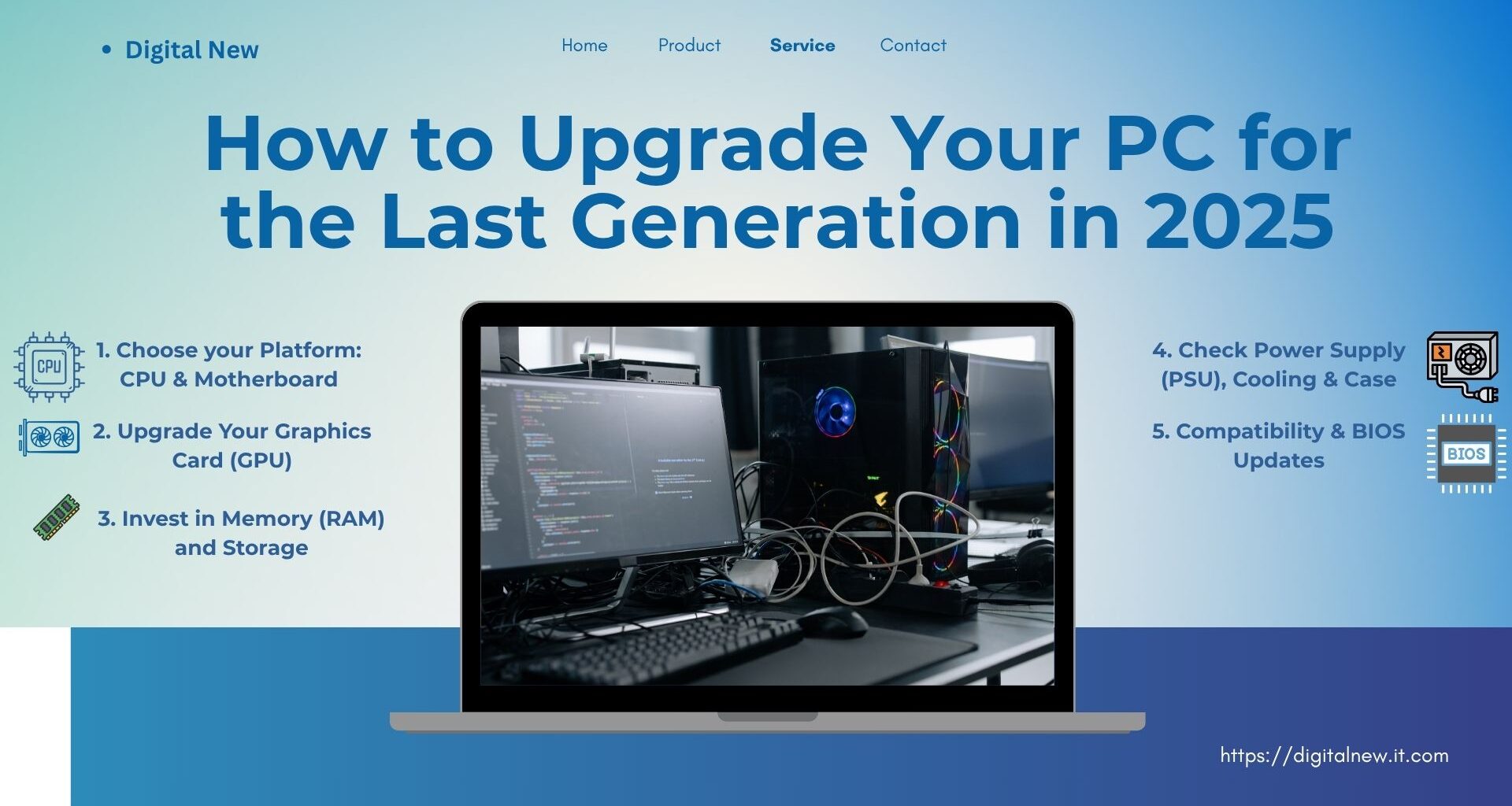How to Upgrade Your PC for the Last Generation in 2025
Upgrading your PC in 2025 means more than just replacing one component here or there — it’s about choosing the last generation of components that still deliver exceptional performance today and sustain well into the future. These are not the bleeding‑edge “next generation” parts, but rather the “recently released, thoroughly tested” components that offer excellent value, compatibility, and longevity. By doing so, you get high performance without paying extreme early‑adopter premiums. Visit https://digitalnew.it.com
Why Choose the Last Generation in 2025?
Stability and Value
When you buy last generation hardware you benefit from mature drivers, verified compatibility and lower costs compared to brand new launches. For example, today’s platforms support DDR5, PCIe 5.0 and modern features like Wi‑Fi 7.
Future‑proofing without overpaying
Instead of chasing a “next gen” release the moment it arrives, choosing top‑tier but established hardware allows you to allocate your budget smartly — more RAM, better cooling, better PSU — while still achieving strong performance.
Upgrade path clarity
By choosing a platform (socket + chipset + memory standard) that is still supported, you make future upgrades easier. For example, you might pick a board that supports PCIe 5.0, multiple M.2 slots and DDR5 memory.
Step‑by‑Step: How to Upgrade Your PC for the Last Generation
1. Choose your Platform: CPU & Motherboard
Start with the core: CPU + motherboard. The “last generation” in 2025 means a CPU that is a recent release but not brand‑new, and a motherboard that supports current features.
- CPU: Aim for a recent high‑performance model — strong single‑core & multi‑core performance, efficient architecture, and good upgrade headroom.
- Motherboard: Choose a board with support for features like DDR5 memory, PCIe 5.0, multiple M.2 slots, good VRM (power delivery) and strong cooling.
By choosing these smartly, you ensure that you’ll be able to upgrade other parts (GPU, storage, RAM) without having to replace the platform again.
2. Upgrade Your Graphics Card (GPU)
In many systems the graphics card remains the performance bottleneck — especially for gaming, video editing, rendering or creative work.
- Pick a last gen card that still offers headroom for today and tomorrow.
- Ensure your PSU (power supply) can handle it, and that your case has space and cooling.
- If you’re still on a very old GPU (e.g., 4‑5 years old), replacing it can yield one of the largest performance jumps.
3. Invest in Memory (RAM) and Storage
These upgrades often yield “feel‑good” improvements: faster load times, smoother multitasking, fewer bottlenecks.
- RAM: In 2025, DDR5 is the standard. Aim for at least 32 GB for gaming, or 64 GB+ if you create content, stream or render.
- Storage: NVMe SSDs, particularly PCIe 4.0 and even PCIe 5.0 models, deliver huge speed gains over HDDs or older SATA SSDs. Upgrading to an M.2 NVMe SSD is one of the most effective boosts you can give your system.
4. Check Power Supply (PSU), Cooling & Case
These components often get overlooked, but they matter — especially if you upgrade major parts.
- PSU: Make sure it has adequate wattage for your upgraded components, is 80+ Gold certified (or better), and has modular cables for ease of use.
- Cooling: A strong CPU cooler (air or liquid) and good case airflow will help your upgraded system run cooler, quieter and more reliably under load.
- Case & airflow: If you upgrade to a larger GPU or want more airflow, consider your case’s internal layout.
5. Compatibility & BIOS Updates
After installing new hardware, it’s essential to check compatibility (socket, power connectors, form factor) and update your system’s firmware (BIOS) and drivers.
- Confirm everything is plugged in correctly and the BIOS version is recent.
- Update GPU drivers, chipset drivers and other component firmware to get stability, performance improvements and feature updates.
Final Thoughts: The Smart Upgrade Strategy for 2025
In 2025 it’s wise to adopt the “last generation” upgrade strategy. What that means:
- Choose hardware that was released recently and is still highly capable — but avoid the price premium of brand‑new launches.
- Prioritise components that will give you the most bang‑for‑buck: CPU+Motherboard first, GPU second, then RAM/Storage upgrades.
- Ensure your platform supports modern standards (DDR5, PCIe 5.0) and has plenty of upgrade headroom.
- Pay attention to power, cooling and system balance.
By following this strategy, you’ll build or upgrade a PC in 2025 that is powerful, efficient and ready for the next several years — without paying the “new‑release tax” of the absolute latest generation. Visit https://digitalnew.it.com










1 comment